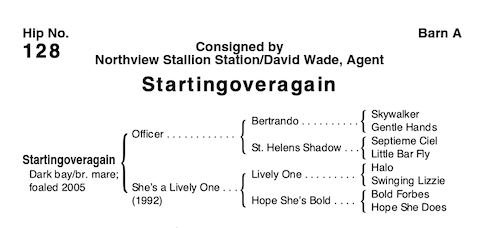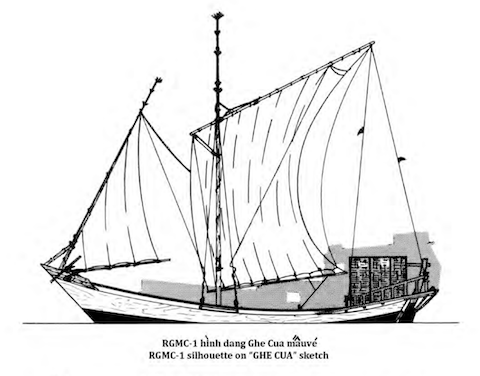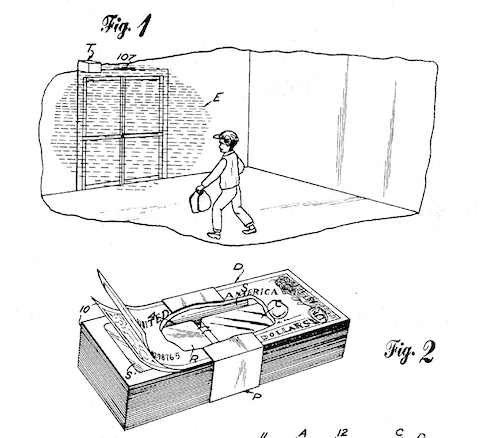Brendan I. Koerner's Blog, page 2
October 26, 2022
The Accidental Poetry of Horse Names

I’ve been trying really hard to fall back in love with the English language, and this gargantuan compendium of racehorse lineages is really helping. There’s such a pleasing alchemy to the way the names evolve over the different generations, and then often end up with a thoroughbred whose moniker can be interpreted as having multiple meanings. It ain’t quite Jack Gilbert, but it’s helping me reacquaint myself with the snap and patter of the written word. And trust me when I say that’s sorely needed these days: There’s been a certain going-through-the-motions quality to my writing in recent months, and I need to do everything in my power to extricate myself from that trend. If reading up on the great-grandparents of horses with names like Lear Skywalker and Diablo’s Number is what gets me over the hump, then so be it.
The post first appeared on Microkhan by Brendan I. Koerner.October 20, 2022
How to Pull Off an Ending
In the name of getting better as a writer, I’ve been grappling with the aspects of the craft that I’m pretty terrible at. High up the list is final paragraphs—I just struggle so much with concocting a hefty parting thought that naturally connects to all that has come before. On the rare occasions I manage to create one that’s halfway satisfying, it’s usually an idea that popped up in the course of my reporting and instantly struck me as worthy of those last lines; the quote that wraps up this extremely long piece is a good example. But more often than not, I just stick a placeholder at the bottom and brute force my way to something meh in the run-up to publication.
So in my quest to improve, I’ve been studying some classic stories that end with tremendous oomph. The one I want to recommend today is something I should have read years ago, given its massive reputation among fans of the genre: Teresa Carpenter’s “Death of a Playmate,” which infamously became the basis for Bob Fosse’s much-loathed Star 80. In addition to being spectacularly reported, Carpenter’s story is notable for how sharply it eviscerates the narcissists who hovered around her main character. The ending drives home the point in such a clear and chilling way—I envy both its economy of language and its moral disgust.
Hype, of course, often passes for prophecy. Whether or not Dorothy Stratten would have fulfilled her extravagant promise can’t be known. Her legacy will not be examined critically because it is really of no consequence. In the end Dorothy Stratten was less memorable for herself than for the yearnings she evoked: in Snider a lust for the score; in Hefner a longing for a star; in Bogdanovich a desire for the eternal ingenue. She was a catalyst for a cycle of ambitions which revealed its players less wicked, perhaps, than pathetic.
As for Paul Snider, his body was returned to Vancouver in permanent exile from Hollywood. It was all too big for him. In that Elysium of dreams and deals, he had reached the limits of his class. His sin, his unforgivable sin, was being small-time.
Related: If you want to know more about why Star 80 is so execrable, I beseech you to check out this recent episode from one of my favorite podcasts, Blank Check. Fosse entirely missed the main theme that Carpenter was trying to convey in the source material.
The post How to Pull Off an Ending first appeared on Microkhan by Brendan I. Koerner.October 18, 2022
Recommended: Space Helmet Reflections
I’m still immersed in trying to get a hard-to-corral Wired story out the door, so deeper thoughts will have to wait another day or two. In the meantime, let me point you toward one of the better microprojects I’ve come across in recent days: A year-long effort to chronicle art that depicts reflections in space helmets. My personal favorite is no great work of beauty, but I’m an obvious sucker for any artifact from the Golden Age of Hijacking.
The post Recommended: Space Helmet Reflections first appeared on Microkhan by Brendan I. Koerner.October 14, 2022
Know Your Boats

If Goal A with the revival of Microkhan is to get myself back in the habit of writing and creating stories, then Goal B is to celebrate folks completely nerding out about the most random of subjects. I find few things more admirable or adorable than people who’ve clearly fallen in love with some arcane subject and want to share their enthusiasm with the world.
The brilliant mind (or minds?) behind Indigenous Boats is an excellent case in point. In addition to chronicling the minutiae of all sorts of small seacraft, they’ve also made public this comprehensive 1962 guide to the junks of South Vietnam. It’s just incredible how much labor the guide’s authors, who were U.S. Navy personnel, poured into scouting the nation for different types of junks, all of which are described and documented in loving detail. A small tidbit from the intro to whet your appetites:
If a craft is large enough to carry a water buffalo standing athwartships, it is clearly a junk. If the animal must assume some other position, or perhaps cannot even make the voyage, the vessel is a sampan.
Back on Monday after a hard weekend of churning out the third draft of a Wired story. Wish me luck.
The post Know Your Boats first appeared on Microkhan by Brendan I. Koerner.March 22, 2022
The Farthest End
Yes, still here, and still curious about those portions of the earth that are most unlike my own. Thus my recent interest in the goings on Heard Island, an uninhabited blob that can lay fair claim to the title “Remotest Place on the Planet.” It’s perhaps best known as the headquarters for the Heard Island Feasibility Test, a 1991 experiment that tested whether underwater acoustic signals could be detected many thousands of miles away from their source. (The answer? A resounding yes.) Six years later, a band of ham radio nerds paid $10,000 a head to travel to the island, set up camp, and ping more than 80,000 fellow operators. They came back with a bunch of footage that’s now been captivating me to no end on YouTube. Rarely have I glimpsed such gorgeous desolation.
I’ve been poking around to find first-hand accounts from those few hardy souls who lived on Heard Island for a time—mostly sealers from the early 20th century. If you have any leads on such material, drop me a line.
The post The Farthest End first appeared on Microkhan by Brendan I. Koerner.October 28, 2021
Atlantic Heavy

Cornell’s digital collection of persuasive maps has a lot to sift through, and a great deal of the material is guaranteed to raise eyebrows. (To the curators’ credit, they haven’t shied away from including malevolent propaganda from days of yore.) I’m partial to a bunch of the more lighthearted maps, such as this Greyhound promotional poster from 1935, but today I’m in the mood to highlight William Bunge’s disturbing work. Most of Bunge’s maps are geared toward illuminating the horrible toll of atomic warfare; aside from the image at the top of this post, this illustration of how a poison cloud could envelope Europe tends to stick in the mind.
Bunge sounds like he followed his own path in life, as evidenced by this snippet from his bio:
Bunge was denied tenure by Wayne State as a result of obscenity charges. In 1968 the House Un-American Activities Committee blacklisted him, along with other “radicals,” from speaking on American campuses. (His name was listed between H. Rap Brown and Stokely Carmichael.) At that point, he moved to Canada and became a “nomad cartographer,” seeking visiting lectureships, working with underground publishers – and driving a cab in Toronto.
Related: A quick explanation for the title of this post.
The post Atlantic Heavy first appeared on Microkhan by Brendan I. Koerner.October 27, 2021
Origins of the Dye Pack

I’d be pleased to make Microkhan about nothing more than fantastic patent art. My current favorite is the drawing above, take from the landmark 1971 patent for the modern dye pack. The inventors, Harold Robeson and Jerry Birchfield, acknowledge in their application that they were standing on the shoulders of giants: The first dye pack, then known as the “Liquid Protecting Device,” dated back to 1932. But Robeson and Birchfield realized that existing devices needed to be activated with a physical squeeze or by hitting a radio switch with a very short range. That meant the robbers would have their money splattered while still in the bank, and might bug out and start shooting upon realizing that their booty was now worthless.
The Robeson-Birchfield dye pack, by contrast, was the first to be outfitted with a timer, so that it wouldn’t explode until the robber was presumably clear of the premises. It was also small enough to be inserted into a hollow stack of bills, which dramatically lowered the odds that a robber might be able to discover it before detonation.
My big question is whether Robeson or Birchfield ever received their deserved recompense. Biographical information about the men is slim, to say the least; my best guess is that Robeson, who appears to hold the bulk of the IP rights, shifted over to property management before he passed away in 1998. If you have any information about these two under-appreciated geniuses, I’m all ears.
Previously on Microkhan: How bank robbery became a well-managed risk.
The post Origins of the Dye Pack first appeared on Microkhan by Brendan I. Koerner.October 26, 2021
Routine Magic

I’ve been revisiting some older movies as of late, in a so-far futile effort to convince Microkhan Jr. that cinema existed and flourished before, say, 2002. In doing so, I’ve become increasingly enamored with the wizardry of practical effects, which are often the product of a sort of technical genius I can scarcely comprehend. The infrequently updated Matte Shot has added to my appreciation of old-school effects, chiefly by illuminating the artistry that went into painting the realistic backgrounds of bygone masterpieces. I’ll confess that most of the movies covered are beyond my knowledge—there’s lots about sword-and-sandals epics from decades before I touched down on Spaceship Earth—but I still marvel at the skill on display. As someone who struggles to draw anything more elaborate than a stick figure, how can I not marvel at someone who can create the entire world of The Running Man with a few paintbrushes?
Slightly related, at least in terms of celebrating a vanishing technical art: My May 2021 Wired story on the man who invented the asymmetric bowling-ball core.
The post Routine Magic first appeared on Microkhan by Brendan I. Koerner.October 25, 2021
Success in Work

As part of a new routine designed to get me out of a creative rut, I’m aiming to start each weekday with a short post. Most will be culled from the mile-long list of bookmarks I’ve compiled over the years—an assemblage of arcane papers, defunct blogs, and curious news items that caught my fancy at some point, and which still hold enough import to survive my occasional thinning of the informational herd.
Today’s entry is a site devoted to Communist propaganda books, a topic of longtime fascination here at Microkhan headquarters. I don’t know how the site’s mysterious author got his/her hands on such a trove of materials, but they’ve clearly devoted themselves to scoping up texts about North Korean manufacturing, Soviet Olympic preparations, and Czechoslovakian agrarian accomplishments. Trust me when I say it’s easy to get lost in all the vintage photos, not to mention the sunny captions.
See also: Microkhan on Fortune’s Favorites, the supposed diaries of American soldiers who defected to North Korea during the war.
The post Success in Work first appeared on Microkhan by Brendan I. Koerner.October 22, 2021
A Decisive Moment

As is always the case, I had to cut a slew of choice details out of my latest Wired story—the bizarre and alarming tale of a Washington State clinical-trials company that (and this is the vastest of understatements) didn’t play by the industry’s rules. In a lot of instances, material got left on the cutting-room floor for legal reasons—there were tangents I couldn’t confirm with multiple sources, for example. But I also had to lose some great anecdotes simply due to space constraints, with the snippet above being a prime example.
The screenshot comes from the trial testimony provided by a woman who worked for the clinical-trials company, and who was ordered to take home an EKG machine so she could falsify patient data. I remain haunted by her epiphany here: In my mind’s eye, I see her lying down on the floor of her house, the machine’s wires snaking away from her chest. And I see the look of consternation on her kids’ faces as they try to suss out why, exactly, mommy has herself hooked up to this elaborate device.
I urge you to read the story, which I believe hangs together despite missing the EKG-machine thread. It was my attempt to grapple with a question that’s had its hooks in my mind for a while: Why are our most vital institutions so vulnerable to the machinations of sociopaths?
The post A Decisive Moment first appeared on Microkhan by Brendan I. Koerner.



